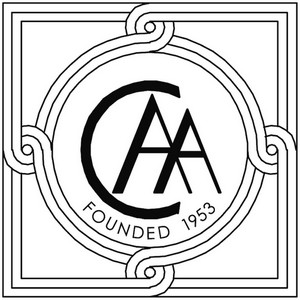»
Home
»
Science » The Croatian Academy of America Issued New Volume of the Journal of Croatian Studies
»
Home
»
Politics » The Croatian Academy of America Issued New Volume of the Journal of Croatian Studies
»
Home
»
History » The Croatian Academy of America Issued New Volume of the Journal of Croatian Studies
»
Home
»
Education » The Croatian Academy of America Issued New Volume of the Journal of Croatian Studies
»
Home
»
Culture And Arts » The Croatian Academy of America Issued New Volume of the Journal of Croatian Studies
| The Croatian Academy of America Issued New Volume of the Journal of Croatian Studies |
| By Stan Granic |
Published
06/15/2011
|
Science , Politics , History , Education , Culture And Arts
|
Unrated
|
|
|
|
Volume 44 of the Journal of Croatian Studies published
 Croatian Academy of America
The Croatian Academy of America issued volume 44 of the Journal of Croatian Studies, its annual interdisciplinary review
The opening essay was written by University of Zagreb Professor Darko Žubrinić and deals with the life and contributions to mathematics of William Feller (1906-1970). One of the founders of Probability Theory as a scientific discipline, Feller was born in Zagreb and received his initial education in mathematics and physics at the University of Zagreb before going on to achieve international fame. Feller was particularly known for his two-volume monograph An Introduction to Probability Theory and Its Applications which underwent several editions and was translated into Russian, Chinese, Spanish, Polish, and Hungarian.
A fascinating chapter in the cultural and religious history of the Croats relates to the Reformation period and is presented by University of Waterloo Professor Emeritus Vinko Grubišić. Despite major challenges and uncertainties as exiles, Croatian reformers in Germany printed over 20,000 books, including complete translations of the Bible into the Croatian language (“stumačena v hrvatskom jaziku” / “in die Crobatische Sprach verdolmetscht”). These books were printed in the Glagolitic, Cyrillic and Roman alphabets in an effort to spread reform ideas throughout lands inhabited by the Croats and other South Slavs.
Various aspects of the history of the Croatian diaspora are presented by three different contributions.
John Felix Clissa examines the migration history of the Italo-Croatians of the Molise region of Italy to Western Australia. The smallest ethnolinguistic minority in Italy, the Italo-Croatians of Molise are remnants of one of Croatia’s oldest diaspora communities whose spoken language has been designated as “severely endangered” by the UNESCO Red Book on Endangered Languages. As an immigrant from Molise, who spent his childhood in Belgium before emigrating to Australia, Clissa’s contribution is an outgrowth of his important 2001 book The Fountain and the Squeezebox (La Fontana e L’Organetto / Funda aš orginet). In this book, he transcribed and saved for posterity the idiolects (specific speaking styles) in Molisan-Croatian (together with English translations) of twenty-seven individuals from Molise and first generation Italo-Croatian Australians who were born between 1901 and 1934.
Based on the records of the U.S. Department of State relating to the internal affairs of Yugoslavia, Jure Krišto, Ph.D., of the Croatian Institute of History (Zagreb) examines the surveillance of American Croats by the Federal Bureau of Investigation (FBI) during World War II. He concludes that the FBI began its spying on American citizen of Croatian descent at the behest of Yugoslav diplomats in Washington, DC. This operation continued despite conclusions by several operatives that further surveillance was not warranted. Instead, over time the surveillance mutated to focus on alleged Communist-related activities of American Croats. He concludes that the FBI was not always careful in the selection of its informants, which often resulted in grave consequences for American Croats.
Following a review of the policy origins of multiculturalism in Canada and the launch of Canadian Ethnic Studies and Polyphony, Stan Granic highlights the approach and achievements of these two periodicals. He then summarizes the main contributions in the two journals dealing with the Croatian ethnocultural community in Canada and the achievements of Canadians of Croatian origin.
Vladislav Beronja provides a translation of Miroslav Krleža’s exceptional poetic essay on the artist Krsto Hegedušić (1901-1975). Hegedušić’s most famous paintings depicted social themes and especially the harsh life of the Croatian peasantry in the style of naive art. Krleža’s essay, considered a masterpiece in its genre in Croatian literature, accompanied Hegedušić’s 1933 book of drawings entitled Podravski motive (The Drava Valley Motifs). Hegedušić’s career was marked by his pursuit of an independent artistic course incorporating a national and social voice combining satirical, grotesque and surrealist elements.
Two reviews are also included in the issue. Brian Gallagher reviews Goli Otok: Hell in the Adriatic (2007), the personal reminiscences of Josip Zoretić about life in the most notorious prison camp of Tito’s Yugoslavia. The reviewer discusses how this work provides a corrective to the observations of those who gloss over the serious human rights violations that took place in ex-Yugoslavia. Vinko Grubišić reviews Kritike, a 2008 collection of forty literary critiques penned by Vinko Brešić. Brešić critiqued works written in verse and in prose of various genres by diverse Croatian authors, literary historians and critics over the last decade.
Stan Granic, CAA
To order a copy of the Journal contact:
The Croatian Academy of America, Inc.
P.O. Box 1767, Grand Central Station
New York, NY 10163-1767
U.S.A.
Fax (516) 935-0019
E-mail croatacad@aol.com
|
Formated for CROWN by prof.dr. Darko Žubrinić
Distributed by www.Croatia.org . This message is intended for Croatian Associations/Institutions and their Friends in Croatia and in the World. The opinions/articles expressed on this list do not reflect personal opinions of the moderator. If the reader of this message is not the intended recipient, please delete or destroy all copies of this communication and please, let us know! |